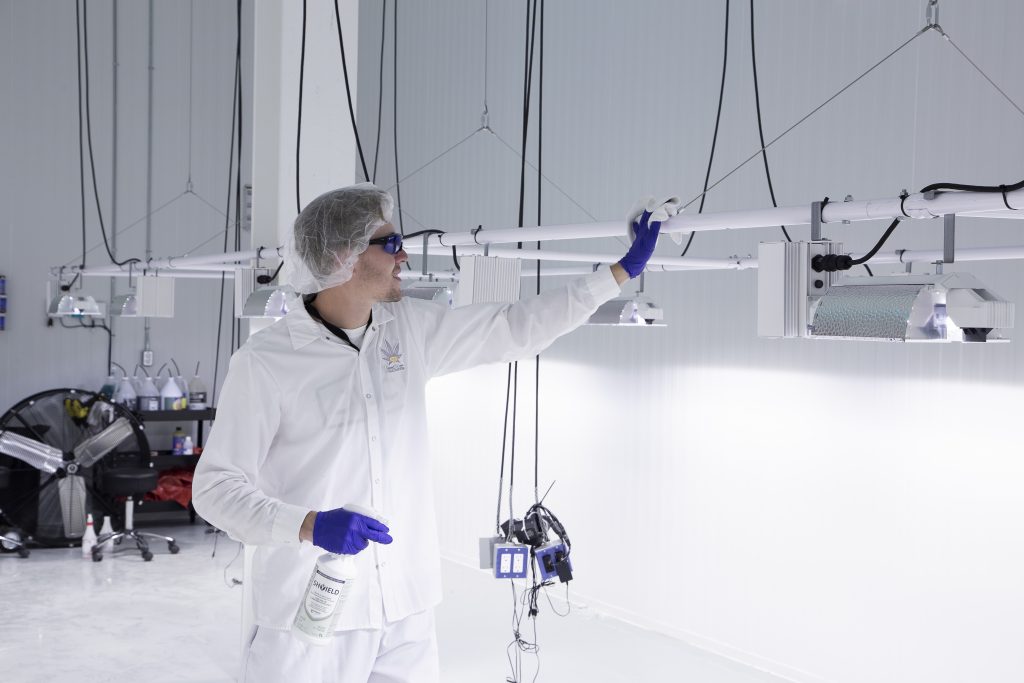
Features
Production
Regulations
Vantage Point: How to build sustainable disinfection protocols
May 10, 2021 By Matthew Buccioni and Troy Henderson
 (Photo: Virox Technologies Inc.)
(Photo: Virox Technologies Inc.) Many people associate disinfection with using harsh chemicals and see it as a necessary evil to kill pathogens that can cause infection in plants and staff. This doesn’t have to be the case. Choosing the right disinfectant and implementing environmentally-sustainable protocols can protect against the spread of infection without compromising safety to the planet.
Tough love
The disinfectant you choose can go a long way in reducing your environmental impact. Older disinfectant chemistries, such as quaternary ammonium compounds, have earned a reputation for being harmful to the environment, as they leave active residues behind which may be toxic to aquatic life.
However, newer technologies have come a long way since, offering efficacy against plant and human pathogens, while remaining biodegradable and non-hazardous to the environment.
Look for products that are unclassified for environmental hazards under Globally Harmonized System (GHS) in-use. This information can be found on Section 2 of the product’s Safety Data Sheet (SDS).
Beyond the chemistry, other less obvious factors can also make a big difference. For instance, choosing a highly-dilutable concentrated product will reduce the amount of packaging that would need to be disposed of.
This is especially true if the product is available in large formats, such as a drum. Another factor to keep in mind is shelf life – choosing products with a long shelf life can help reduce waste due to expired products, which is a common problem with unstable solutions that need to be continually refreshed.
Safety First
In addition to being gentle on the environment, disinfectants used in cannabis facilities should also be non-irritating to the user to promote occupational safety. This means looking for a disinfectant that is not classified for any physical or health hazards. Like environmental hazards, this can also be found on the product’s SDS.
However, choosing a product with an ideal safety profile can have hidden environmental benefits, such as reducing the amount of personal protective equipment (PPE) required in certain areas of the facility.
When disinfecting office spaces or reception areas, you may want to choose a disinfectant that does not require the use of gloves and goggles for safe application. While each facility should determine a Standard Operating Procedure that meets their needs, reducing the volume of PPE consumed will allow you to dispose of less waste overall.
Cleaning Matters
It’s easy to underestimate the importance of cleaning when using a disinfectant but the process of physically removing soils, resin and other organic debris, is essential for the disinfectant to work properly.
Some products are one-step cleaner-disinfectants formulated with surfactants, meaning that they are effective in the presence of organic soils. While it is still important to dry-clean visible soils from the surface, one-step products can effectively kill pathogens while removing soil residues left behind.
Other commonly-used solutions, such as pure isopropyl alcohol or bleach, lack cleaning properties which means that surfaces may need to be pre-cleaned with a separate detergent for the disinfectant solution to be effective.
Choosing a one-step cleaner-disinfectant will not only save time and effort but it can cut down chemical consumption significantly. This also allows you to reduce the number of other materials used for cleaning, such as microfibre cloths, mop heads and PPE.
Waste reduction matters
A common misconception when it comes to disinfection is that more is better, leading to wasted product and a bigger environmental footprint. If using a concentrated product, automated mixing stations can help ensure correct concentration is being dispensed. Test strips may also be available from the disinfectant manufacturer to verify this. Tools such as these can help ensure that the correct amount of product is being used, avoiding unnecessary waste.
How the disinfectant is applied to surfaces can also make a difference. Using a foaming application, particularly in large areas such as grow rooms, can help achieve superior surface coverage without the need for disposable or laundered cleaning materials. Foaming disinfectant can also help reduce the total volume of liquid used saving product in the long run.
Protecting plants and people from infection within cannabis facilities does not need to be at the expense of environmental sustainability. By implementing the right products and protocols, cleaning and disinfection can be a core part of sustainable cannabis operations.
 Matthew Buccioni is the infection prevention and biosecurity specialist at Virox Technologies Inc.
Matthew Buccioni is the infection prevention and biosecurity specialist at Virox Technologies Inc.
 Troy Henderseon is an account executive and LP consultant at Virox Technologies Inc. Virox is the creator of SHYIELD disinfectants.
Troy Henderseon is an account executive and LP consultant at Virox Technologies Inc. Virox is the creator of SHYIELD disinfectants.
Print this page